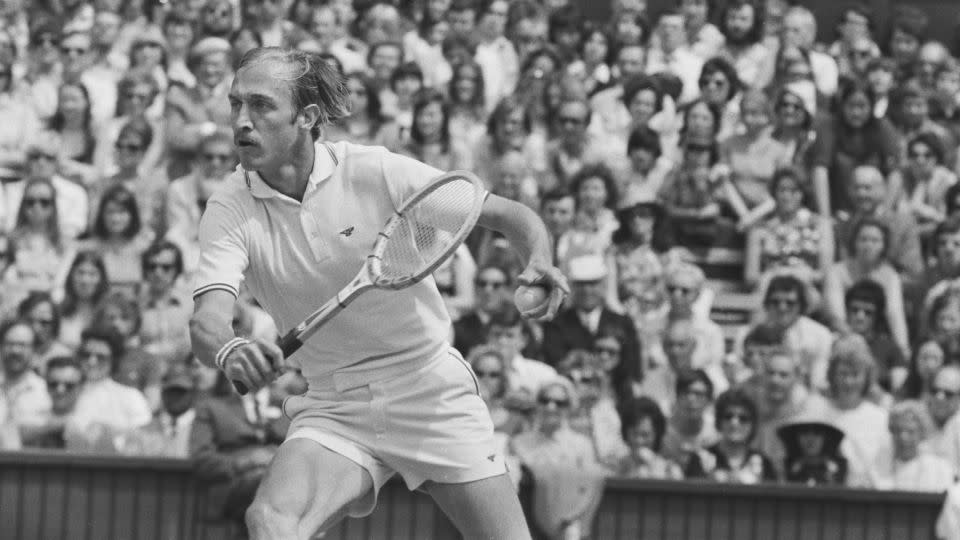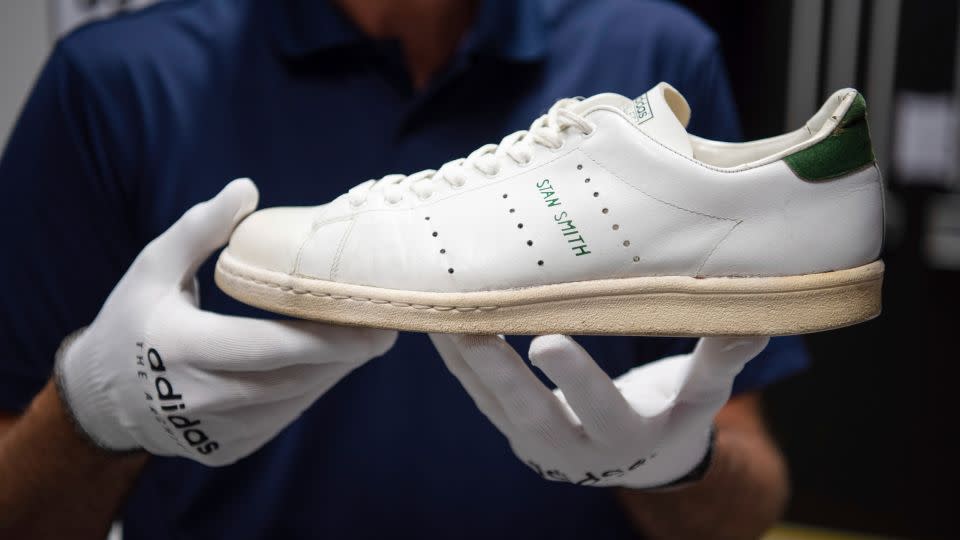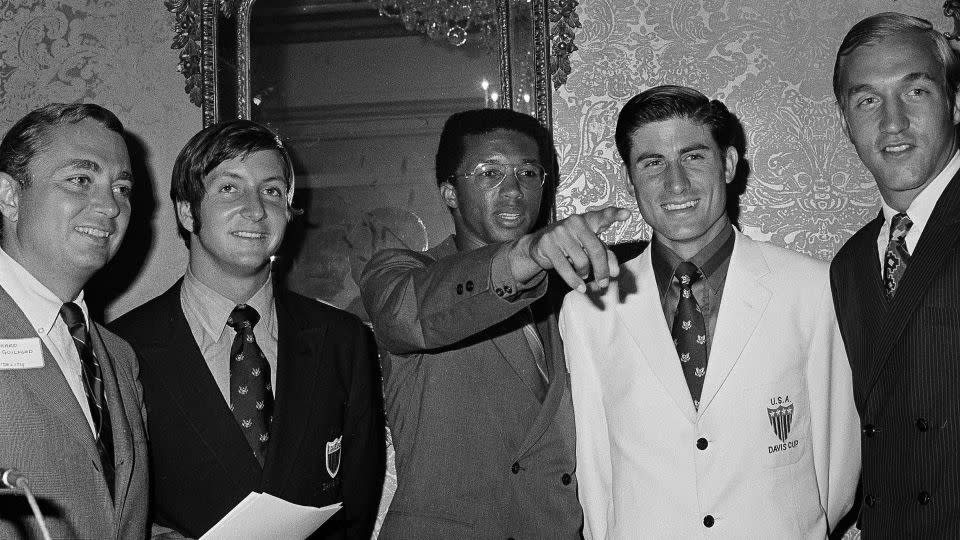Depending on your age, the name Stan Smith probably means one of two things.
For younger people, it’s the name of a sleek and stylish leather Adidas sneaker. For those of an older age, it’s the name of a strapping six-foot-four, moustachioed US tennis star.
“People sometimes are surprised that there is even a person affiliated with that name at all,” Smith tells CNN with a chuckle.
“It’s been interesting over the years and it’s been fun in many ways to see people’s reactions … finding out there was a tennis player named Stan Smith.”
It’s rare for somebody to be talented and charismatic enough to become an icon in one field. It is rarer still for somebody to become an icon in two.
As sports journalist Cari Champion notes in the documentary ‘Who is Stan Smith?’, which explores the remarkable life of the two-time grand slam champion, activist and style icon: “He has his face on a sneaker. Even Jordan doesn’t have his face on a sneaker.”


The documentary’s Emmy Award-winning director Danny Lee tells CNN “there’s something very understated and human” about Smith.
“He never, I think, endeavoured to become an icon and I think when it happens organically within culture, and in this respect, sports culture and fashion, it just makes more sense.
“So there’s something of Stan’s personality that’s imbued in the shoe. It’s understated. It’s elegant. It’s stately. And I think that’s why it works.”
In the mid to late 1970s, it became increasingly common to see people wearing sneakers casually, outside of the gym and integrating them into their individual outfits.
The rise in popularity of the Stan Smith sneaker coincided with a slump towards the end of his tennis career and it began permeating a wide array of cultures in the UK and US.
Young soccer fans began wearing them on the terraces in the UK, partly inspired by David Bowie donning the sneaker in the late ‘70s.
Then came its impact on hip-hop culture, led largely by the Beastie Boys and RUN-D.M.C.’s world tour in the late 1980s and the release of the single ‘My Adidas.’
“Every community embraced that shoe,” Pharrell Williams says in the documentary – “Hustlers, drug dealers.”


During the 1972 French Open in Paris, Adidas chairman Horst Dassler, son of the company’s founder, asked for a midnight meeting with Smith and his agent Donald Dell.
Adidas wanted to expand into the USA and saw Smith, the newly crowned US Open champion, as the perfect fit.
The leather design and perforations on the side of the shoe – which at the time of its launch was named Adidas Robert Haillet after the French tennis star – were technological advancements, historian and designer Gary Aspden explains in the documentary.
Smith agreed to wear the sneaker at Wimbledon that year, a tournament he went on to win.
“It had Haillet’s name on the shoe for about six or seven years and then they wanted to expand to the US market, so they asked me to be involved,” Smith tells CNN. “I was the number one player in the world at the time, an American, so they put my picture on the tongue and they had Haillet on the side.
“They had several iterations along the way. Then, finally, about four or five years later, they took the Haillet name off the shoe. And as they say, the rest was history.”
Arthur Ashe and the Davis Cup
The documentary charts Smith’s rise from a working-class family in Pasadena, California, where he was scouted by a club called the Pasadena Tennis Patrons. The club was made up of wealthy parents in the area, who would cover the costs of talented youngsters trying to turn professional.
In the 1960s, the Davis Cup – a team tournament contested by countries from around the world – was one of the most prestigious tennis tournaments in the world, unlike the lesser status it commands today.


In 1963, the USA welcomed Mexico to the Los Angeles Tennis Club for the Americas semifinal and it was there that a young Smith, a ball boy at the time, first caught a glimpse of rising tennis star Arthur Ashe.
Ashe being selected for the team was a “huge deal,” Dell says in the documentary. Ashe was the first African American to play on the US Davis Cup team.
At that time, a year before US President Lyndon Johnson signed the Civil Rights Act, segregation was still rampant in America – the documentary shows clips of “White” and “Colored” entrances and waiting areas – and Ashe couldn’t go everywhere his teammates could go.
Smith eventually made the US Davis Cup roster and in 1968, alongside doubles partner Bob Lutz – portrayed as Smith’s early club rival in the documentary – led the team to victory, ending Australia’s four-year chokehold on the title and simultaneously helping to spark a surge in the sport’s popularity across the US – known as the ‘tennis boom.’
In the documentary, produced by LeBron James’ Uninterrupted company, Dell calls 1968 “an extremely violent year in America.” Activist Martin Luther King Jr. was murdered in April of that year as protests against racial injustice raged across the country, which was also divided about the ongoing Vietnam war.
Ashe began using his platform as one of the US’s best tennis players to speak out, saying in a 1968…
CNN







